As the most iconic and widely recognized symbol of a nation’s military power, and as an asset that plays an increasing role through technological advancement, the fighter jet will continue to be heavily invested in by nearly every major military power into the 21st century. Fighter aircraft in the 2020s are among the most critical and versatile assets used by national militaries than during most of the 20th century, performing a variety of missions from airborne early warning and control to offensive electronic warfare, air defense suppression, nuclear weapon delivery and more. effect. , anti-ship and air-to-air combat. the ability of fighters to lead a major strike has defined the course of many wars in recent decades, from the Gulf War in 1991 to the NATO-Libya War two decades later, leading to investments in acquisitions and asymmetric means to deal with advanced air defense systems This is a common priority for militaries around the world, especially in areas of high tension between countries such as Europe and Northeast Asia.
Although production of other types of assets such as cruise missiles, artillery and attack drones in some countries has increased significantly, especially after February 2022, as geopolitical tensions between the Western bloc and its opponents have intensified, the scale of production will increase. It takes a very long time and the volume of production of modern fighter jets means this is still an area where production changes are particularly slow. Because fleet composition has been planned for decades, and fighter programs are the most expensive weapons program to implement, they stand out in this regard as an asset type. Still, a look at the largest acquisitions of fighter jets by air forces around the world shows which programs are dominating production today, as well as the types of fighters that are growing the fastest in service.
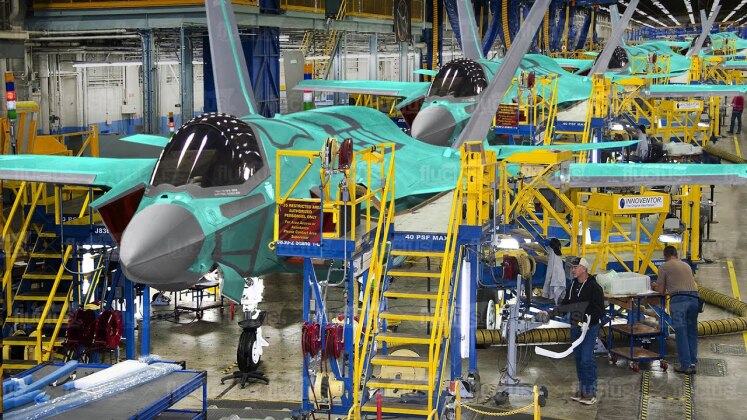
USAF: 48 F-35s
For an unprecedented number of years, the F-35 has held the position of the only fighter class the Air Force has ordered, before the Air Force begins small-volume purchases of the F-15EX fourth-generation fighter in 2021. The fighter is also the only fighter from the U.S. Air Force. The fifth generation, produced in the Western world, leads the way in terms of capabilities despite being initially conceptualized as a lighter, cheaper counterpart to the heavyweight twin-engine F-22 Raptor. Due to widespread problems, F-22 production is only 25 percent of planned numbers and has yet to receive the latest sensors, data links and other critical avionics technology. The F-35A is considered the best fighter jet of the 21st century because breaking through enemy ground air defenses is considered more likely to perform the mission than engaging an equivalent fighter because air forces outside Western spheres of influence are scarce and these airpower The strength lies in the performance fighter. Developed under the Joint Strike Fighter program, the F-35 is far from the most maneuverable fighter or the best aircraft for air-to-air combat, but it was designed to deploy stealth capabilities in an affordable manner, making it Can be widely deployed. The fighter is produced on a scale comparable to that of all other Western fighter categories combined, although it is not yet considered ready for high-intensity combat. Its unique position among NATO-compatible aircraft makes it a market leader in the export market for Western-aligned countries, especially Europe.
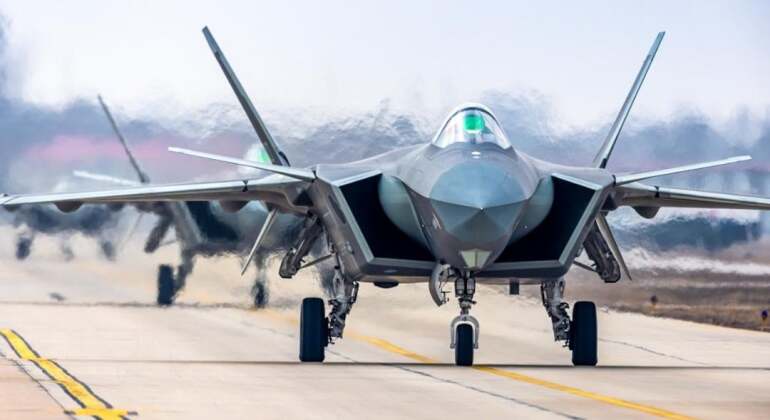
PLA Air Force: About 42 J-20s
Along with the F-35, the only fifth-generation fighter that has entered production and is in service at the squadron level, the J-20, while equally emphasizing stealth and cutting-edge avionics, is designed very differently because it is a A large twin-engine heavy aircraft developed primarily for flying purposes. High-end air superiority missions. Deliveries of the fighter to the People’s Liberation Army (PLA) Air Force began in 2016, and development began when the US Air Force was expected to field a large number of F-22 air superiority fighters and continue to modernize them for an extended period of time. production run. With no strong fleet of modern F-22s to contend with, the J-20, especially the newest J-20B variant, has a significant advantage over rival fighter classes including the F-35, a Much smaller aircraft, not designed for air superiority missions, can’t fly as fast, as far, or as high, and can’t carry a decent amount of munitions or similarly large radars. As both benefit from cutting-edge avionics not found in many other fighter jets, such as the Distributed Aperture System, the J-20 gains a distinct advantage in armament through the introduction of the PL-15 and PL-10 air-to-air missiles. Since then, the United States has invested heavily in programs such as the AIM-260 missile to close the gap.
The J-20 was produced on a much larger scale than any other heavyweight fighter, and on a par with the F-22’s original projected production scale. It was the first jet fighter outside of the United States, Russia or the Soviet Union to be considered a serious contender for the title of world’s strongest fighter in the air-to-air field. The air force of its producing country has ordered more models of this class than any other fifth-generation fighter, including the baseline J-20, the J-20A with improved WS-10C engines and stealth capabilities (in service from 2021), the J- 20AS two-seater aircraft, and the J-20B with further improved stealth capabilities and a substantially improved WS-15 engine. The WS-15 gives the J-20 far more thrust than any other fighter class in the world, while increasing its range and opening up new possibilities in weapons integration and allowing superpowers to be carried out at faster speeds than the WS-10C Cruise flight promotion.
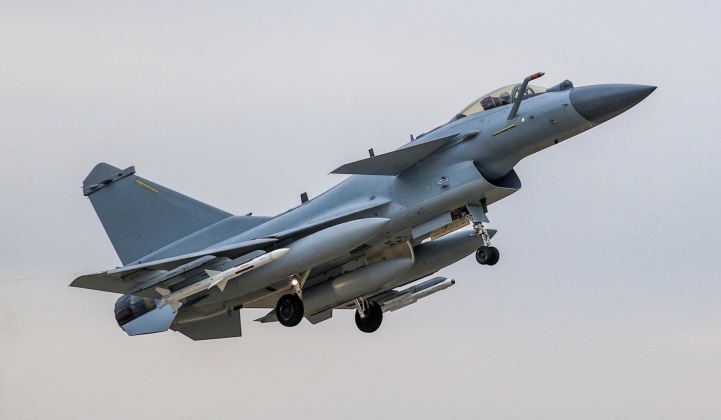
PLA Air Force: about 42 J-10C
The J-10C entered service in 2018 and is one of three types of fighter jets that the PLA Air Force has procured in large quantities since the mid-2010s, with estimated purchases sometimes approaching 50 aircraft per year, until Pakistan’s order in 2021 led to some production being shifted to meet national demand. external demand. The fighter adopts a light single-engine design and has “4+ generation” capabilities. It is considered to be the closest opponent of the F-35A in comprehensive performance among single-engine fighters. What it lacks in stealth, it more than makes up for in availability, ease of maintenance, flight performance and advanced armament. The aircraft has been designed with low operating costs and maintenance requirements, allowing it to be deployed in large numbers, but it has proven to be very capable in exercises – often outperforming the Russian Su-35 and the Russian jet’s indigenous counterpart, the J-16, in simulated engagements. Like all aircraft of its size, the fighter has relatively short range, limited radar size, and limited weapons payload compared to heavy fighters such as the J-16 or J-20. Still, it offers a means of bringing China’s fighter force to the latest standards in avionics, armament, and flight performance at a cost that is overwhelmingly superior to the J-7 and J-10A fighters it has Success in key positions and a significant advantage over the vast majority of fighters the PLA Air Force is likely to face in combat.
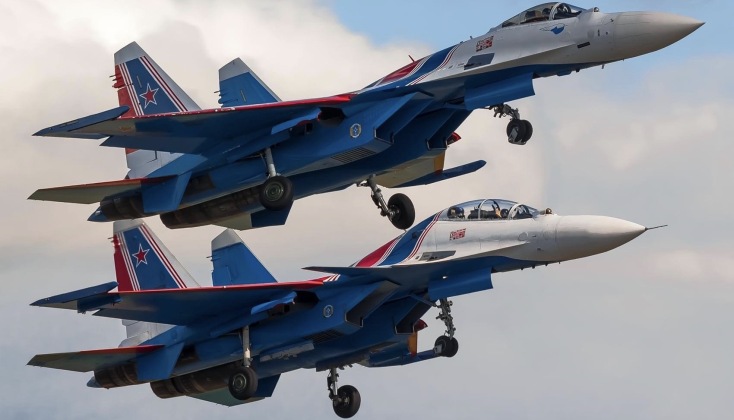
Russian Air Force: About 40 Su-30/34/35 Flankers
Eight years after the Su-27 “Flanker” fourth-generation heavy-duty air superiority fighter joined the Soviet Air Force and Air Defense Forces in 1984, the Russian Ministry of Defense began severely curtailing the procurement and deployment of other classes of fighters starting in 1992 due to the sharp shrinkage of the country’s economy and the defense budget. The Su-27 has the endurance needed to effectively cover vast Russian territories, although most air bases ceased operations and most of the fighter force was disbanded in the 1990s, and the Russian fleet in the post-Soviet period was far smaller in number than NATO’s relative A performance advantage over rival fighter classes is believed to offer at least a qualitative advantage. Thirty years later, however, the Russian Air Force has become more reliant on modernized forms of the Flanker design—nearly all of the fighters procured in the past 30 years have been the Su-30M2 and SM multirole fighters, the Su-34 attack fighter and the Su-35 air Superior fighters, all produced at a rate of about 14 per year at plants in Irkutsk (Su-30SM), Novosibirsk (Su-34) and Komsomolsk-on-Amur (Su-30M2 and then Su-35S). The Flanker classes between them, while having very different capabilities and relatively low part commonality, have highly complementary capabilities. However, the fact that all three aircraft are being procured on a scale lower than that of the leading single fighter categories of the United States and China shows just how small the Russian Air Force’s fighter fleet has become compared to the days of the Soviet Union. Initially expected to cease procurement of the Flanker series around the early 2010s, a decade after the Soviet Union brought the fifth-generation MiG 1.42 into service, Russia’s difficulties in bringing the fifth-generation fighter into service have led Russia to continue to rely on the ” Flanker” variant.
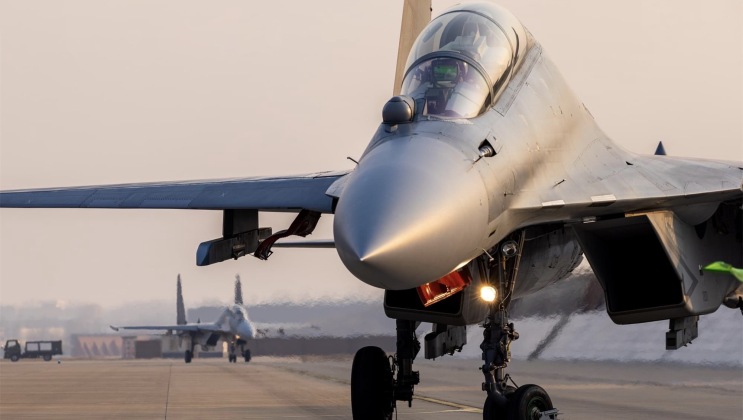
PLA Air Force: About 28 J-16s
Improving Sino-Soviet relations in the late 1980s, combined with Moscow’s perceived need to strengthen security ties with its largest neighbor following the collapse of the Warsaw Pact, led to China’s delivery of three Su-27 Flankers in 1990, known as the Su-27 Flanker’s first foreign customer the following year the Soviet Union collapsed. The Su-27’s advanced capabilities have resulted in China receiving numerous orders, including nearly 100 enhanced Su-30 variants from the late 1990s to the mid-2000s, as well as licenses to produce the Su-27 domestically in quantities far exceeding The affordability of the Russian Ministry of Defense itself. Consequently, most of the Su-27s produced in post-Soviet Russia were supplied to the PLA Air Force and Navy. Chinese Su-27 derivatives gradually surpassed the Russian original, taking advantage of Chinese advances in electronics, weapons and composites technology, culminating in the J-16, which entered service in 2014 as a “fourth generation plus” fighter .
The J-16 lacks the longer range and powerful engines of the Russian Su-34 and Su-35, but exceeds them in most other performance metrics. Its most notable strengths are its greater use of composite materials in its airframe, its use of AESA radars, and perhaps most importantly its network-centric warfare capabilities and armament, including missiles developed for the J-20 such as the PL-15 and PL -10. Procurement of the J-16 is about twice as fast as the Russian Flanker model, about 28 per year, and the aircraft offers a good balance between air superiority and strike roles in a standard two-seat configuration. However, as the J-20 matures and deliveries expand, Chinese investment in the Flanker has declined.

